When you seek one of the most reliable finishing options in the rapid prototyping industry, then a powder coat finish will come in handy. Powder coating for custom-manufactured parts is a great way of imparting improved physical and mechanical properties to these parts. Since its inception, powder coating has become very popular.
Many manufacturers use it for various applications, ranging from general industrial products to automotive and electrical parts. This article will guide you on everything you need to know about powder coating. The information you will find here includes the process of coating, its various advantages, and its applications. Also, we will provide essential tips for effective powder coating of your custom manufactured parts. Let’s get right to it!
What is Powder Coating?
Powder coating refers to a finishing process involving applying a free-flowing, dry, thermoset, or thermoplastic powder material to the surface of a part. This is one of the most durable finishing processes for different materials. It works perfectly on metals, plastics, and other range of materials used in custom manufacturing.
Powder coating generally involves two main methods. These are fluidized bed application and electrostatic spray deposition (ESD). Regardless of the process used, the result is an even, hard powder coat finish that is cost-effective, durable, and environmentally friendly. To better understand the topic, you need to answer the question – how does powder coating work?
How Does a Powder Coat Finish Work?
The powder coating process is a multi-step procedure. The procedure often includes preparation, application, and curing stages. At the minimum, you need a spray gun, a spray booth, and a curing oven for your coating process. Powder coating uses a powdered material on a preheated substrate surface.
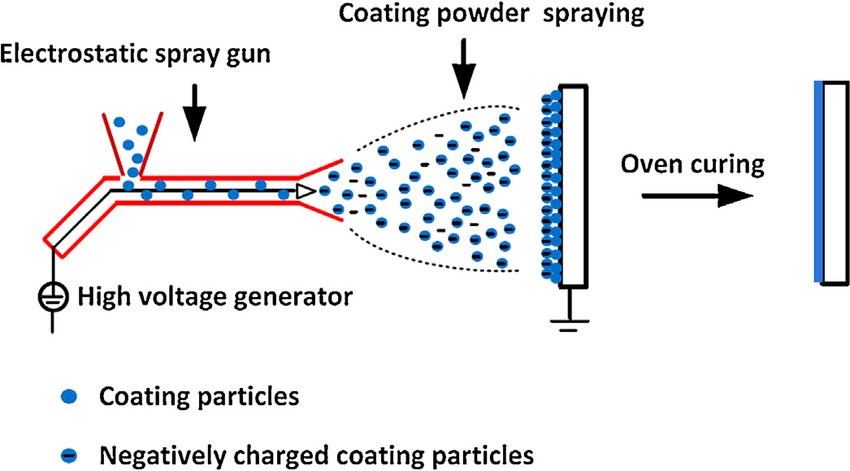
Here, we will discuss the three main stages of getting a powder coat finish for machined parts.
The Surface Preparation Stage
Before applying any powder coating material, it is vital to clean and treat the substrate’s surface. This aims at ensuring that the part is free of dirt, dust, and debris. Inadequate preparation of the substrate’s surface may affect the adhesion of the coating powder on the part. It may also affect the overall quality of the finish.
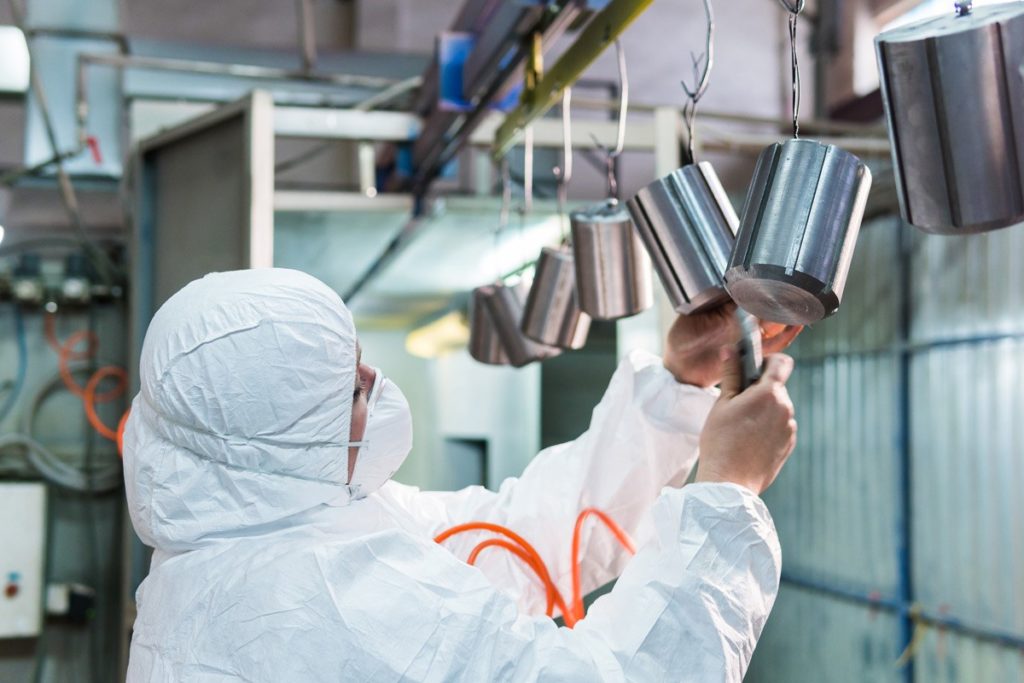
In the rapid prototyping industry, some of the steps in this stage include rising, cleaning, blasting, etching, and drying. In most cases, manufacturers use tools like blast rooms, wash stations, and dry-off ovens. Weakly basic or neutral detergents in dip tanks can help remove grease, residue, or solvent from a part’s surface.
On the other hand, wash stations can also come in handy. This equipment can spray components with water, detergent, or other pretreatment solutions. Consequently, it helps to chemically prepare or clean the surface before the powder coating process.
Furthermore, a blast room may be necessary for parts with surface debris such as scaling or other similar defects. It could be injection molding defects or those that come from processes like welding.
The blast room uses pressurized fluid (often compressed air) in an enclosure to propel the abrasive material against the part’s surface. The abrasive material may be grit, sand, or shot. As a result, the abrasive removes the surface debris and creates a cleaner and smoother surface to apply the powder coat finish. A dry-off oven also helps evaporate water or solution off rinsed or washed parts.
The Powder Coat Finish Application Stage
As mentioned earlier, manufacturers generally use two primary methods for the powder coating process. They are:
- Electrostatic Deposition (ESD).
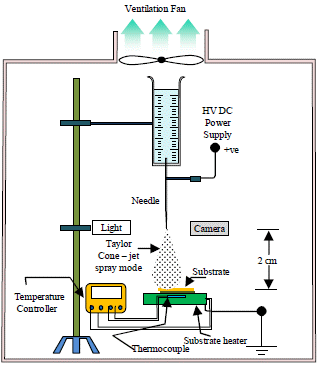
For your custom metal parts, an electrostatic spray deposition method helps to apply the coating material. This application uses a powder feeder, a powder spray booth, and an electrostatic spray gun. The spray booth is the work area to apply the powder material onto the part.
This area also acts as the air filter and overspray containment. In the method, the spray gun imparts an electrical charge onto a fluidized powder material before application to the substrate. With ESD, you can collect any overspray material using specialized recovery systems. Those materials can be reused for future powder coatings.
- Fluidized Bed Powder Coat
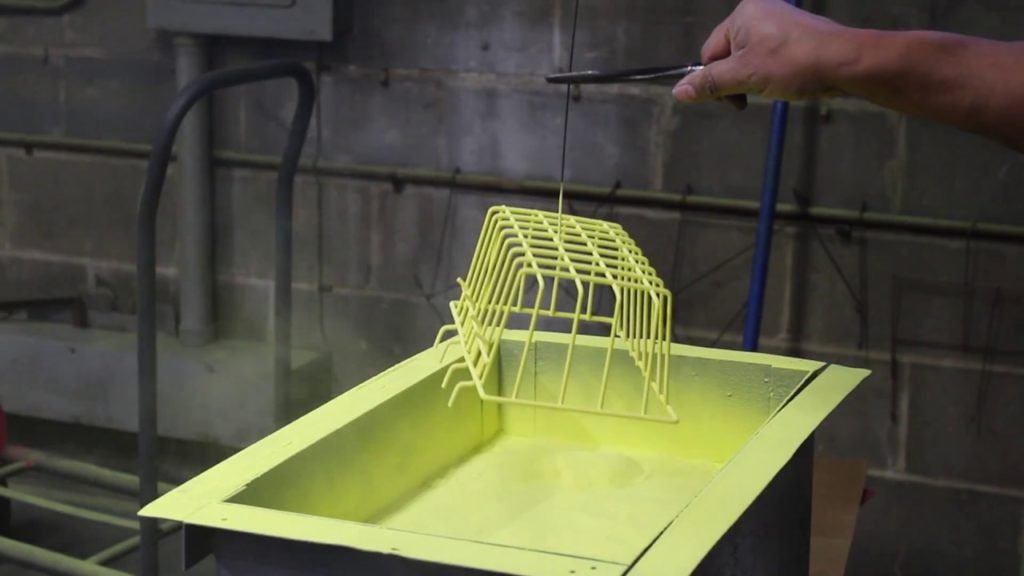
In this case, the first step is to preheat the part to be coated, and these parts are then dipped into the powder material in a fluidized bed. Sometimes, it is possible to introduce electrically charged powder particles before passing the part through the fluidized bed.
The Coated Part Curing Stage
The characteristics and particularities of the curing stage for a powder coating finish depend on the method used. For ESD coated parts, curing must be done in a powder curing oven. The temperature and time used for the curing will depend on the part’s size, thickness, and shape. Generally, an oven temperature between 325- and 450 degrees Fahrenheit requires a curing time between ten minutes to about an hour. Accordingly, smaller machined parts will need lesser curing times and a lower amount of heated air for proper curing. On the other hand, the preheating of parts cured using fluidized beds provides a good curing environment.
In any case, assembly, packaging, and shipping of the powder-coated parts can be done once they are cool enough to handle.
Different Powder Coating Materials Used for Custom Manufactured Parts
Generally, we have three main categories of powder coatings, either for metal or plastic parts. Typically, costing and potential complexities in the powder coating process will determine a manufacturer’s choice.
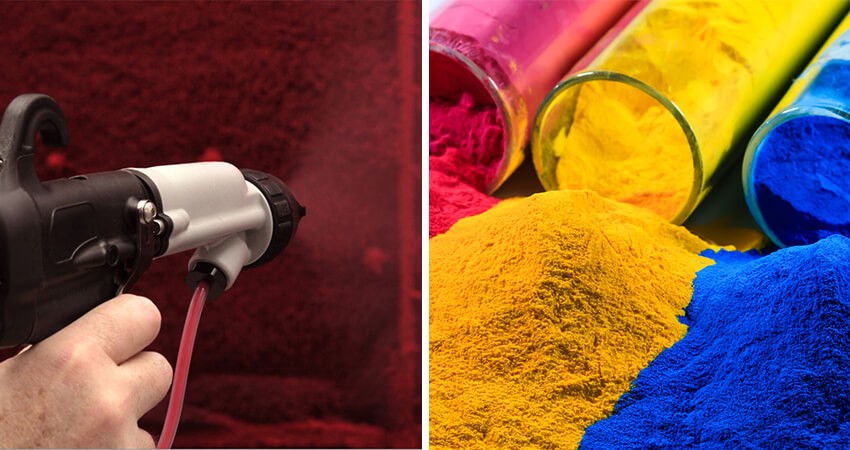
In these categories of powder coating materials, there are a number of sub-groups. Also, each powder aims at attaining specific finishing qualities. The types of powder coating materials include:
1. Thermoplastic Powder Coat Finish Materials
These are synthetic materials capable of multiple formations. They melt at high temperatures, and they solidify on cooling. Thermoplastic materials coat metal parts by melting at application temperatures. Then, they show improved chemical and mechanical strengths with cooling. In the prototype manufacturing industry, these powder coating materials are beneficial for their durability and aesthetic advantages. Some of them include:
· Polyvinyl Chloride (PVC) Powder Coating
When you seek a durable and sleek powder coat finish for your parts, then you should go for PVC coatings. These coatings are pliable, and they are helpful in a wide range of applications. They are also resistant to several solvents, impact, and spray. PVC coatings have good dielectric strength, making them suitable for electrical applications.
· Polyester Powder Coating
These coatings look great, they are resistant to abrasions, and they also weather well. They are perfect for use on exposed automobile parts like strut springs. You will find them in a wide range of pallets of colors. They are strong, tear-resistant, and they reduce shrinking.
· Nylon Powder Coating
Nylon powder coats are very durable, and they impart resistance to materials. They offer adequate protection against solvents and chemicals, ensuring the use of parts for longer periods. Since nylon has a low friction coefficient, it is valuable as a coating material on gears and conveyor parts.
· Polyolefin Powder Coating
Powder coat finish with polyolefin materials are very resistant to chemicals and abrasives. These materials provide smoother surfaces and excellent adhesion characteristics to the machine parts. Thus, the medical industry can benefit from these coatings on laboratory components requiring regular cleanings.
2. Thermoset Powder Coat Finish Materials
You apply thermoset powder coating materials in a similar manner as thermoplastic powders. However, the difference is that thermosets go through chemical cross-linking reactions. These reactions are often non-reversible when baked.
When cross-linking occurs, there is a change in the physical properties of the plastic. Consequently, the changes harden these plastics into solid coatings. Many times, thermosets cure harder than thermoplastics. Also, some of them become brittle when they harden, especially with thicker coats. Examples of these powder coat finish materials include:
· Epoxy
Epoxy-coated materials are usually hard and electrically insulating. However, when you expose them to UV light, they become brittle and may dull over time. Thus, most epoxy-coated components are restricted to indoor uses or underground applications such as pipes.
· Epoxy-Polyester Hybrid
This hybrid helps to prevent chipping or to crack by creating softer plastics upon the addition of polyesters to epoxies. Hybrid powder coating does better outdoors than regular epoxy coating. This is because they have better weathering capabilities and less chalking.
· Acrylic Powder Coating
Acrylics blend perfectly over surfaces to leave a high gloss finish that may be clear or pigmented. Presently, they are useful as automobile coating for specific parts such as exposed engine parts and those requiring super gloss finishes.
3. Ultraviolet (UV) Curable Powder Coat Finish Materials
The conventional powder coating process uses either a convection oven or a standard infrared to confer the powder coat finish. The temperatures, in this case, often go as high as 400 degrees Fahrenheit. Also, the curing times may be about 10 to 30 minutes. Due to these factors, it is difficult to coat injection-molded plastic parts with powder coats.
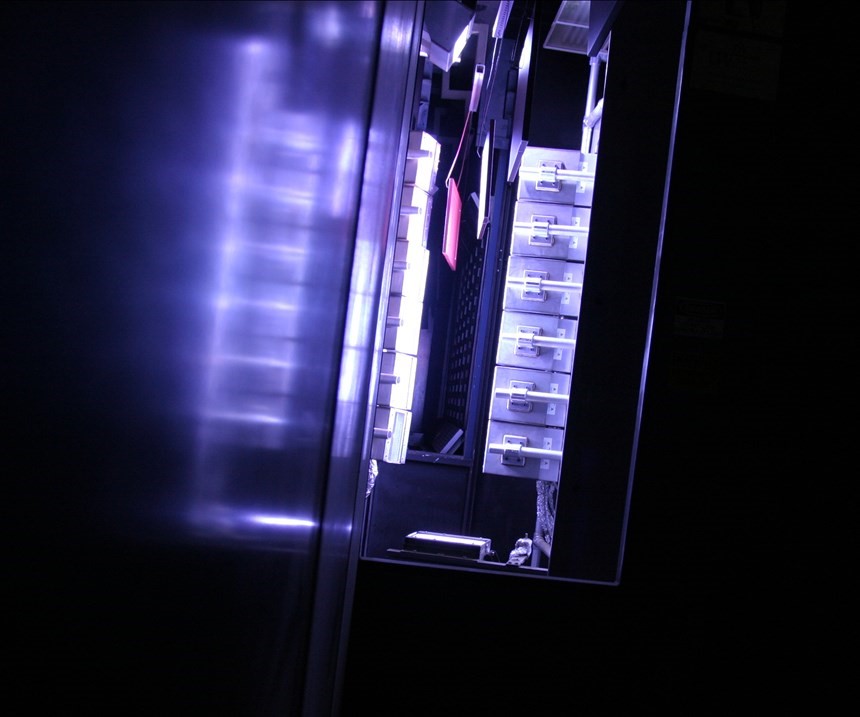
However, recent developments are creating new powders and resins. These resins use ultraviolet (UV) light to cure powder-coated parts. Curing with UV is possible at temperatures below 200 degrees Fahrenheit in under two minutes. Thus, it becomes possible to powder coat plastic parts and other materials that may not be able to withstand higher coating temperatures. Moreover, faster time to market is possible with such coated prototypes, reducing manufacturing costs.
Benefits of a Powder Coat Finish
Powder coating offers a wide range of benefits, and this explains its several different applications in many industries. The benefits of powder coating finish include the following:
Durability. Powder coat finishes are famous for their excellent corrosion and abrasion resistance. When compared to liquid coating, a powder coated metal often has higher corrosion resistance. The anti-corrosive and anti-abrasive properties of the metal surface finishing process help to maintain the quality of the component for extended periods.
Variety. There are several coating materials available for powder coating. Thus, you have an extensive range of options available for different applications. You can have different colors or finishes ranging from high to low gloss and metallic finishes.
Less Toxicity. Solvent-based or liquid coatings often emit toxic, volatile compounds during heating or electrification. This causes significant pollution of the atmosphere and can be harmful to factory workers. However, the amounts of compounds emitted during a powder coat finish are negligible. Therefore, it is a much safer process.
Cost-Efficient. The powder coating process is pretty straightforward. It requires very little training and a cleanup process. Therefore, it is a rather inexpensive finishing option despite the high-quality results obtained.
Common Applications of Powder Coat Finish in Custom Manufacturing
Powder coating is a versatile and efficient method for an expanded breadth of applications. Among its applications and incredible practical benefits, you can find powder coat finishes on every sort of component.
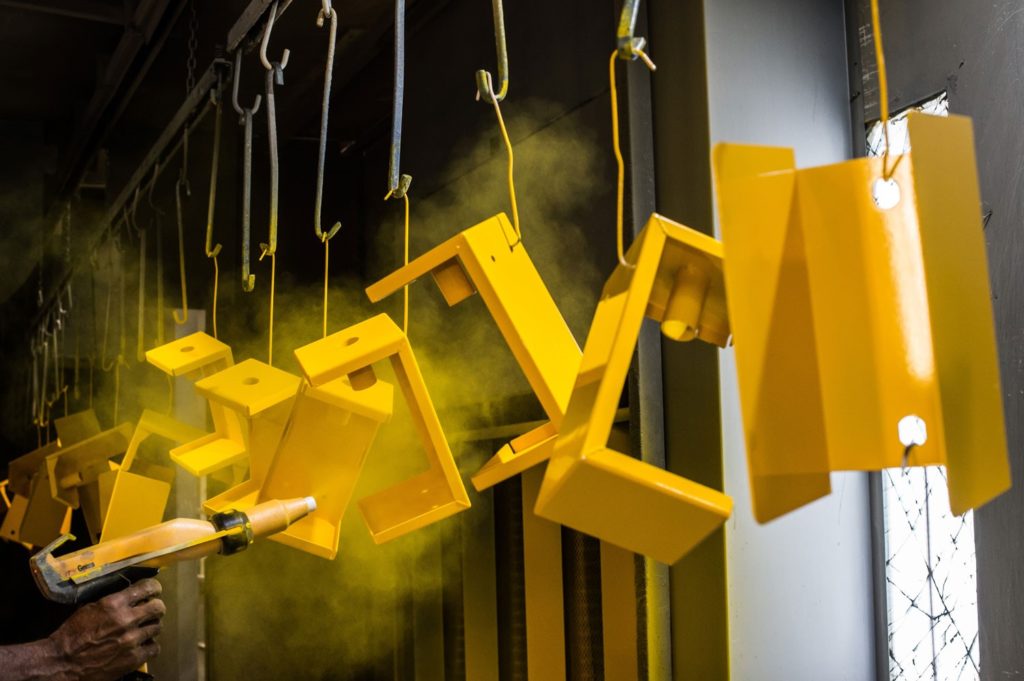
One thing that makes the powder coating process a better choice across various industries is its cost-effectiveness. Some of the applications of powder coating include:
Automotive Parts
Powder coat finish is popular for its use throughout the automotive industry as a finish for several automotive components. Some of the specific applications include:
- Surface primers, e.g., door handles, trims, and bumpers, etc.
- Under-hood components, e.g., brake components, oil filters, battery trays, coil springs, radiators, etc.
- Automotive wheels
- Ashtrays
- Motorbike frames
- Mirror brackets
Electrical Appliances
Powder coating is a popular finishing technique in this segment because of its resistance to corrosion and abrasion. Some of the applications here include the following:
- Switch gears
- Electric connectors
- Lighting fixtures
- Motor housings
- Electric junction boxes
Pros and Cons of Powder Coat Finish
We often compare powder coatings with liquid paints whenever it comes to finishing decisions. This way, we can easily consider the advantages and disadvantages of a powder coating.
Pros of Powder Coating
- Achieves a wide range of finishes
- Protects against scratches, corrosion, or fading
- It is an economical and durable quality finishing process
- Gives a consistent color finish across the component
- Can produce thicker coatings than traditional liquid coatings
- Non-toxic and less flammable, making it environmentally friendly
Cons of Powder Coating
- May not be able to produce thin coatings
- Not applicable for larger surfaces
- It may be difficult to coat non-metal surfaces
- Higher temperatures are required, which may affect the integrity of the product
RapidDirect Quality Finishing Services
With a wide variety of finishes available for your custom part manufacturing, powder coating is one of the most effective and affordable finishes you can get. However, you need the right expertise and experience to get the best out of the powder coating process. RapidDirect offers you professional finishing services to get a durable and high-quality end product. We have years of experience in offering cost-effective surface finish solutions for several industries.
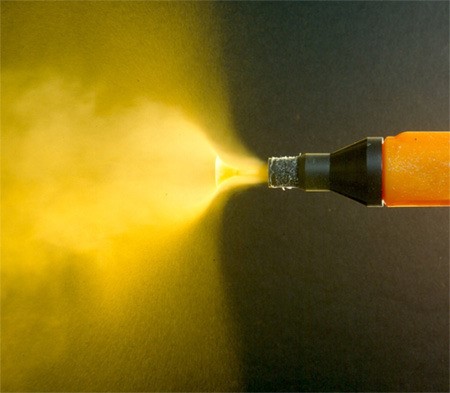
We leverage our extensive range of finishes and materials to get the best out of your parts. Our team of experts is ready to work with you to produce a finish that meets your expectations. The ultimate aim is to provide high-quality services at affordable costs and to provide overall customer satisfaction. Upload your design file today to receive an instant quote. You can also contact us for any inquiries.
Tips for Effective Application of Powder Coat Finish
There’s a lot we can discuss on how to powder coat, ranging from equipment used to applying the finish.
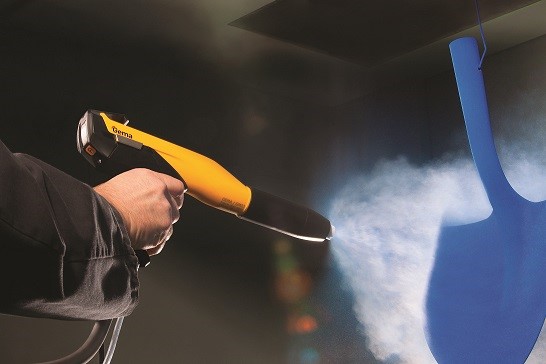
Here are some great tips that will help you avoid problems and achieve practical powder coat finishes.
1. Avoid Picture Framing
Picture framing often occurs as a thicker film around the edges of the component. This often occurs due to too much flow or the application of powder too thickly on the component. How do you avoid it? You can prevent picture framing by paying attention to the spray dispersal and gun when applying the powder. Try not to aim at the edges directly. Also, carefully watch the flow and adjust your gun settings accordingly.
2. Gun Spits are Problematic
Avoid spits that may be due to too much fluidization. When there’s too much of it in the hopper, a lot of air bubbles are created. This leads to an inconsistent flow with a mix of powder and air. In many cases, you tend to have too much air. Build up of powder on the gun tip can also cause gun spits. You can fix all of these with better maintenance of your equipment. Check the hoses of your spray guns and ensure there are no restrictions whatsoever.
3. Ensure Good Powder Adhesion
You don’t want your coatings peeling off after some months of use. Therefore, you have to ensure that your powder has good adhesion properties. A simple cross-hatch adhesion test will help you confirm this property on your powder coating material.
4. Know Your Powder Types
Can you differentiate polyesters from thermoplastics and hybrids? Different powder coating materials offer different performances. So, your choice of powder type will have a significant effect on the end result.
5. Keep Your Pumps in Good Conditions
You may regard pumps as the heart of your powder coat finish. They are responsible for pushing air through the powder material to shift it towards the component. It is important to maintain the pump’s inadequate conditions. You don’t want your issues cropping up in the middle of a coating process.
Powder Coat Finish FAQs
A powder coat finish often provides better performance than wet painting. It provides more resistance to scratching, chipping, and other types of wear. This is due to the thermal bonding that occurs during the curing process and the possibility of applying it in much thicker layers. Furthermore, powder coating can retain color better than painting.
Powder coating is quite versatile, and it is adaptable to different kinds of materials. The most popular materials that can be powder coated include mild steel, stainless steel, aluminum, electroplated or galvanized steel, and many other steel alloys. Other materials include injection molded plastics, brass, copper, etc.
The industries served by powder coating include:
Automotive industry
Medical industry
Aerospace and marine industry
Electronics
And more.
Conclusion
Powder coating finishes are one of the best options when it comes to metal fabrication and other rapid prototyping processes. It provides excellent results in a wide range of metal parts, and there is no limit to the color or finish you can get. Its cost-effectiveness also makes it a wise option for your next product design. Get in touch with us today for your professional finishing services.


